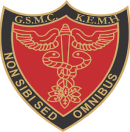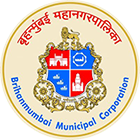
KING EDWARD MEMORIAL HOSPITAL
SETH GORDHANDAS SUNDERDAS MEDICAL COLLEGE
बृहन्मुंबई महानगरपालिका रुग्णालय


KING EDWARD MEMORIAL HOSPITAL
SETH GORDHANDAS SUNDERDAS MEDICAL COLLEGE
बृहन्मुंबई महानगरपालिका रुग्णालय


The Department of Paediaric Anaesthesia was established on 8th April 2018 with an intake capacity of two DM admissions and two Fellows per year.
| Sr No | Name | Designation |
| 1 | Dr Indrani Chincholi | Professor Emeritus |
| 2 | Dr Raylene Dias | Assistant Professor |
| 3 | Dr Swarup Ray | Assistant Professor |
| 4 | Dr Nikhil Kesarkar | Assistant Professor |
| 5 | Dr Amrit Kaur | Assistant Professor |
RESIDENTS
| Sr No | Name | Designation |
| 1 | Dr Uditi Parmar | SR- DM 3rd year resident |
| 2 | Dr Gayathri P | SR- DM 2nd year resident |
Fellows
| Sr No | Name | Designation |
| 1 | Dr Hemachander Sridharan | SR |
| 2 | Dr Madhuri Bamnote | SR |
HOUSE OFFICER
| Sr.No. | Name | Designation |
| 1 | Digvijay Jaideepsingh Deore | House officer |
SR
| Sr No | Name | Designation |
| 1 | Dr Laxmi Zade | SR |
| 2 | Dr Amreen Fatima | SR |
Activities of the Department from August 2021
Academic Events/CME’s conducted
Prizes won
2. Dr Akhil Goel (fellow) poster “Neonatal Epignathus: small pill bug thrill” at the IAPA mid–term conference conducted on 5th September.
2021
2019
Ongoing projects
| Sr. No. | Name | Teacher | Designation | Thesis |
| 2. | Dr. Nikhil Kesarkar | Dr. Raylene Dias | Bonded AP | “Cascade sign for optimal positioning of central venous catheter tip using ultrasound – a prospective pilot study ”. |
| 3. | Dr. Nikhil Kesarkar. | Dr. Raylene Dias | Bonded AP | “Feasibility and efficacy of low flow sevoflurane anaesthesia administered through face mask during MRI in children”. |
| 4. | Dr Vishal Saxena | Dr Raylene Dias | DM Resident | Co-Relation between Oxygen Reserve IndexTM and Central Venous Oxygen Saturation in Paediatric patients. |
| 4. | Dr Uditi Parmar | Dr Raylene Dias | DM Resident | Ultrasonographic measurement of optic nerve sheath diameter during laparoscopic surgeries in pediatric patients:An observational study. |
| 5. | Dr Uditi Parmar | Dr Raylene Dias | DM Resident | Comparison of ultrasound guided brachiocephalic and internal jugular vein cannulation in neonates and infants:A prospective randomized controlled trial. |
DM Pediatric Anesthesia Programme
Admission Requirement
For admission to DM (Paediatric Anaesthesiology), a candidate is required to possess MD or an equivalent qualification in anaesthesia of an Institute/University recognized by the Medical Council of India.
Duration of Course
Three full academic years
No. of Candidates
As per sanctioned Intake- 2 seats
Aims and Objectives of the Course
The aim of the course is to impart thorough and comprehensive training to the candidate in the various aspects of this specialty to enable him/her:
(a) To function as a faculty/consultant in the specialty
(b) To carry out and help in conducting applied research in the field of paediatric anaesthesia
(c) To plan and set-up independent paediatric anaesthesia unit catering to paediatric surgery and intensive care.
Method of Selection
The selection of candidate for admission of DM in Paediatric Anaesthesia is to be made through nationwide Common Entrance Test (NEET) The selection is based on merit only.
Periodic rotations in the following Operation Theatres and Intensive Care Units would be made.Paediatric Surgery, Plastic Surgery, Neurosurgery, Cardiovascular and Thoracic Surgery, Cardiac catheterization laboratory, Interventional radiological procedure laboratory, Otorhinolaryngology Surgery, Ophthalmology Surgery, Gastrointestinal Surgery (GI scopy, Liver Transplantation), Paediatric ICU, Neonatal ICU.
The following teaching programme is prescribed for the course:
DM seminar/Case discussion/Tutorial once a week
Journal Club once a week
Teaching of MD Anaesthesia students by the DM student is part of the training.
Period of Posting in Various Units
The trainee will be posted in different specialties and duration of these postings will be as following:
Paediatric surgery OR 16 months
CVTS 2 months, Cardiac catheterization lab 2 months
Neurosurgery 1 months, Plastic Surgery 1 month, ENT 2 months
Pediatric Pain Clinic- 1 month
Paediatric ICU 3 months, Paediatric Surgery ICU 1month, Neonatal ICU 2 months
Posting at Speciality Centre 2 months
Exam preparation 3 months
Fellowship Programme
Course is designed to train candidates in the principles and practice of Paediatric Anaesthesia to enable them to conduct anaesthesia and intensive care for paediatric patients and to function as faculty/consultant in Paediatric Anaesthesia and paediatric preoperative and postoperative intensive care.
The trainee will be posted in different specialties and duration of these postings will be as following:
Pediatric General Surgery OT- including Urology, Oncology, Thoracic Surgery- 5 months
NICU- 1 month
Pain Clinic- 1 month
Cardiac OT & Cath Lab- 1 month
Plastic Surgery- 1 month
Orthopedic Surgery- 1 month
ENT- 1 month
Neurosurgery- 1 month
DM Pediatric Anesthesia Programme
Admission Requirement
For admission to DM (Paediatric Anaesthesiology), a candidate is required to possess MD or an equivalent qualification in anaesthesia of an Institute/University recognized by the Medical Council of India.
Duration of Course
Three full academic years
No. of Candidates
As per sanctioned Intake- 2 seats
Aims and Objectives of the Course
The aim of the course is to impart thorough and comprehensive training to the candidate in the various aspects of this specialty to enable him/her:
(a) To function as a faculty/consultant in the specialty
(b) To carry out and help in conducting applied research in the field of paediatric anaesthesia
(c) To plan and set-up independent paediatric anaesthesia unit catering to paediatric surgery and intensive care.
Method of Selection
The selection of candidate for admission of DM in Paediatric Anaesthesia is to be made through nationwide Common Entrance Test (NEET) The selection is based on merit only.
Periodic rotations in the following Operation Theatres and Intensive Care Units would be made.Paediatric Surgery, Plastic Surgery, Neurosurgery, Cardiovascular and Thoracic Surgery, Cardiac catheterization laboratory, Interventional radiological procedure laboratory, Otorhinolaryngology Surgery, Ophthalmology Surgery, Gastrointestinal Surgery (GI scopy, Liver Transplantation), Paediatric ICU, Neonatal ICU.
The following teaching programme is prescribed for the course:
DM seminar/Case discussion/Tutorial once a week
Journal Club once a week
Teaching of MD Anaesthesia students by the DM student is part of the training.
Period of Posting in Various Units
The trainee will be posted in different specialties and duration of these postings will be as following:
Paediatric surgery OR 16 months
CVTS 2 months, Cardiac catheterization lab 2 months
Neurosurgery 1 months, Plastic Surgery 1 month, ENT 2 months
Pediatric Pain Clinic- 1 month
Paediatric ICU 3 months, Paediatric Surgery ICU 1month, Neonatal ICU 2 months
Posting at Speciality Centre 2 months
Exam preparation 3 months
Fellowship Programme
Course is designed to train candidates in the principles and practice of Paediatric Anaesthesia to enable them to conduct anaesthesia and intensive care for paediatric patients and to function as faculty/consultant in Paediatric Anaesthesia and paediatric preoperative and postoperative intensive care.
The trainee will be posted in different specialties and duration of these postings will be as following:
Pediatric General Surgery OT- including Urology, Oncology, Thoracic Surgery- 5 months
NICU- 1 month
Pain Clinic- 1 month
Cardiac OT & Cath Lab- 1 month
Plastic Surgery- 1 month
Orthopedic Surgery- 1 month
ENT- 1 month
Neurosurgery- 1 month